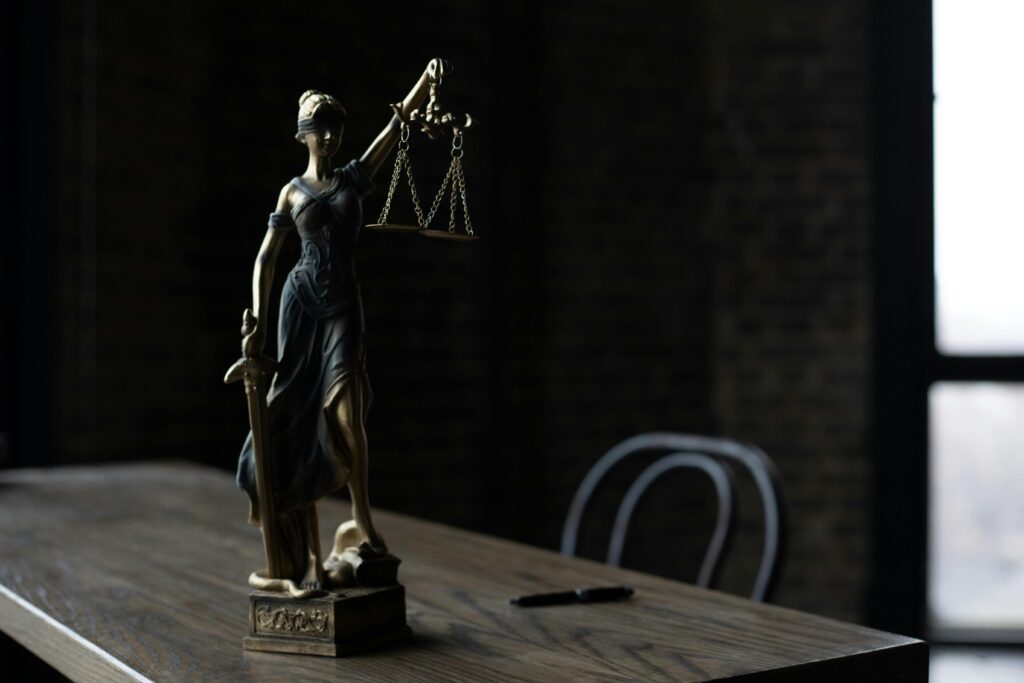Published on 17th July 2025
Authored By: Vaida Jaasmita
Vellore Institute of Technology, Chennai
Introduction
In Jitender Kumar Sharma v. State and Ors., 2010, the Delhi High Court issued a landmark decision on August 11, 2010, addressing the conflict between the laws prohibiting child marriage and the rights of minor parties who choose to get married.[1] The case began when 17-year-old petitioner Jitender Kumar Sharma filed a writ petition seeking the protection and production of his 16-year-old wife Poonam Sharma, along with the dismissal of criminal charges brought against her by her family. The petitioners had eloped and consummated a Hindu marriage despite the fact that neither of them was older than the statutory ages (18 for the bride and 21 for the groom) stipulated by Section 5(iii) of the Hindu Marriage Act, 1955.[2] After discovering the marriage, Poonam’s family filed formal complaints under Sections 363, 376, and 506 of the Indian Penal Code, 1860 (IPC),[3] accusing Jitender of kidnapping, rape, and criminal intimidation. Poonam was taken into custody and put in a shelter, while Jitender, who was considered a minor under the Minor Justice Act of 2000[4], was moved to a juvenile home. A petition concerning whether the marriage was illegal or influenced by the statutory age restrictions, as well as whether legal action against the juvenile spouse was required, had to be decided by the Division Bench consisting of Badar Durrez Ahmed and V.K. Jain, JJ.
The ruling is notable for its broad interpretation of children’s welfare and personal autonomy, even though the law forbids child marriage. The court recognized the “old and evil practices of parents forcing their minor children into matrimony” as well as the more recent phenomenon of young people “falling in love and getting married on their own.”[5] It stated that in the absence of legislative action, courts will be overloaded with habeas petitions from “devastated parents and petrified young husbands running for their lives, when their’sin’ is that they fell in love.”[6] The High Court finally decided that the welfare and desires of the young wife should come first, that criminal charges had to be dropped, and that the child marriage was not voidable or invalid under the Prohibition of Child Marriage Act, 2006[7] or Hindu personal law, despite the fact that it was legally illegitimate. The court granted Poonam permission to live with her husband with family guarantees for her safety.
Facts of the Case
In 2010, Jitender Kumar Sharma and Poonam Sharma, who were both under 18, got married after falling in love in Uttar Pradesh. Poonam’s father formally complained in Delhi under Section 363 IPC (kidnapping) and Section 376 IPC (rape)[8] due to resistance from Poonam’s family. After voluntarily marrying Jitender, Poonam requested that no legal action be taken against them. However, the pair was apprehended in Bilaspur, Uttar Pradesh, and transported to Delhi. Jitender was committed to a juvenile correctional facility, and Poonam was returned to her parents. Poonam refused to have a medical examination at the police station, and her mother wouldn’t let her. In her statement, Poonam claimed that she had not accused Jitender of rape or coercion and that she had married him willingly. Jitender filed a court petition to quanch the FIRs and grant his wife habeas corpus relief, along with a request for police protection for himself, Poonam, and their families. The factual record included information about a voluntary marriage between two minors, the swift action taken by the police and parents in response to allegations of rape and kidnapping, Poonam’s unwillingness to live with her family, and Jitender’s juvenile detention.
Legal Issues
- Whether the marriage solemnized between the petitioner and the respondent, both of whom were minors at the time, is valid or void/voidable under the Hindu Marriage Act, 1955?[9]
- Whether the petitioner’s act of taking the minor respondent away from the lawful guardianship of her parents without their consent constitutes kidnapping punishable under Section 363 of the Indian Penal Code?[10]
- Whether the petitioner is criminally liable for rape under Section 376 of the IPC by virtue of having sexual intercourse with the minor?[11]
- Whether the petitioner’s conduct constitutes criminal intimidation under Section 506 of the IPC, in view of the absence of any credible threats despite opposition by the respondent’s family to the marriage?[12]
- Whether the petitioner, as husband of the minor respondent, is her natural guardian, and whether the custody of the minor wife should be placed with him or with her biological parents under the Guardians and Wards Act, 1890[13], taking into account the minor’s welfare and the constitutional guarantee of personal liberty?[14]
- Whether the High Court can exercise its writ jurisdiction under Article 226 of the Constitution and its inherent powers under Section 482 of the CrPC to quash the FIR and criminal proceedings against the petitioner and direct the custody of the minor respondent, in view of Article 21 and the interests of justice?[15]
Arguments of Both Parties
Petitioner’s Arguments: Poonam’s repeated statements were used by petitioner Jitender to bolster his assertion that she had married him voluntarily and knowingly. He insisted that it would be unjust to pursue criminal charges against Poonam because there were no allegations of rape or kidnapping in his evidence. Jitender’s lawyer emphasized Poonam’s independence and welfare by quoting Section 6 of the Guardians and Wards Act, 1890[16]. They claimed that by denying Poonam her freedom, they were violating her fundamental rights to life and personal freedom. They maintained that the couple should be allowed to live together as husband and wife since Jitender was a minor and the new child-marriage charge did not apply.
Respondent’s Arguments: Since it was against the law for a child to get married without their parents’ consent, the State and the girl’s family viewed the elopement as a crime. Respondents argued that statutory age restrictions were unassailable and that child-marriage laws penalize such unions.[17] They also insisted that Poonam was not legally detained and that the police were fulfilling their duties to protect. Respondents denied the FIR charges, claiming that Sections 363/376 could still be prosecuted in spite of Poonam’s assent statement. It was disputed that the petition was framed as a habeas corpus claim. The court found the petitioner’s focus on Poonam’s stated will and guardianship rights to be persuasive, while the respondents’ emphasis on statutory procedures was viewed as secondary.
Judgment of the Court
The Delhi High Court (DB) dismissed the FIRs and granted a plea, ordering Poonam to return to her husband.[18] The court considered whether Jitender and Poonam’s marriage was null and void because the Hindu Marriage Act of 1955 does not include age violation as a cause of nullity. The court also examined the Prohibition of Child Marriage Act, 2006, which lists specific grounds for nullification in Section 12 and creates a voidable marriage when a minor enters into one. However, the court pointed out that none of the requirements of Section 12 applied in this case and that the marriage was not instantly void under the applicable personal law.[19] The court determined that Poonam, a married juvenile, was appropriately in Jitender’s custody, emphasizing the concepts of guardianship and preference. at contrast to being held against her will at the Nirmal Chhaya shelter, the court determined that Poonam’s want to live with her husband and his family would be best served by living with Jitender and his family. According to the ruling in Neetu Singh v. State (Delhi HC, 1999),[20] forcing her to stay in state custody would be a violation of her basic right to liberty under Article 21. The court later dismissed the FIRs, stating that the continuation of the proceedings was “an exercise in futility” and unfair. Among the primary concerns were Poonam’s acknowledgement that she was solely responsible for the elopement, the fact that the marital rape exemption applied to rape accusations, and the fact that the criminal intimidation accusation was baseless.[21] Because Jitender was younger than 18, the court decided that both FIRs should be dropped and that even PCMA §9, which penalizes an adult male for marrying a minor, was moot.
By pointing out that some jurisdictions differentiate forced child marriages from adolescent marriages by allowing them with parental or court approval, the Division Bench also urged recognition of reality. It lamented the fact that courts are plagued by personal disputes in the absence of legal direction and warned that if nothing changes, courts will be overrun with habeas corpus applications from “broken hearts” and “weeping daughters,” when parents and children clash. In the end, the Delhi High Court allowed the plea, threw out the FIRs, and mandated that Poonam go back to her husband. The court’s ruling was supported by the Hindu Minority and Guardianship Act, the natural guardianship and preference principle, and the broader social context of teenage marriages.
Critical Analysis
The importance of finding a balance between children’s legal protections and their welfare and personal freedom has been brought to light by the Indian Jitender ruling. The mutually agreed-upon union is still valid because, in the court’s view, unapproved child weddings do not render a marriage null and void. The court distinguished between traditional child marriages, which are arranged by parents for their minor children, and modern adolescent love weddings. It emphasized that while traditional weddings should remain illegal, marriages based on genuine and consenting love should be allowed. Invoking Article 21 of the Constitution to protect Poonam’s liberty, the court indicated that prolonged state custody of a consenting underage wife is a violation of fundamental rights. Since Jitender was effectively reframed as a protective guardian, allowing him to reintegrate into society under his father’s supervision, the ruling has an impact on juvenile rights. The court supported the marriage’s current effects even though it did not support it as a principle. Critics argue that by allowing children to evade legal protections, Jitender violates laws against child marriage. The court’s reasoning, which highlights the importance of protecting and guiding young people without compromising their substantive freedoms, is based on the welfare concept.
Precedents
The High Court’s decision adds to and expands on a body of precedent regarding custody rights and child marriage. Among the noteworthy examples are:
- Seema Devi alias Simaran Kaur v. State of H.P., 1998: A marriage that violates §5(iii) HMA is “neither void nor voidable,” meaning that while it is punishable under §18 HMA, it is not legally void, according to the Himachal Pradesh High Court. It further determined that the wishes of a minor wife should supersede the requirement for guardianship, echoing the welfare concept.[22]
- The Supreme Court held in Anjali Kapoor v. Rajiv Baijal, 2009, that a significant wife’s custody should normally go to her husband unless there are conflicting welfare reasons. Citing Anjali Kapoor, the Jitender bench cited the principle that a married woman, even a minor, should not be held “against her will.”[23]
- Lata Singh v. State of U.P., 2006: Despite involving an adult of the age of 18, this case demonstrated the fundamental right to choose one’s spouse as a component of liberty. Jitender’s emphasis on Poonam’s will reflects its ethos, which is respect for human autonomy. This tactic is used by Jitender to carry out Poonam’s.[24]
Conclusion
The Delhi High Court upheld the validity of a young couple’s marriage and granted custody to the husband in light of Poonam’s well-being. The court dismissed Jitender’s criminal case, arguing that it would be unjust to punish him without resorting to physical force. The case represents a shift in the direction of protecting youth from compelled marriage and overbearing government meddling in their personal affairs. The court emphasizes the importance of children’s welfare and individual freedom while warning that existing laws may need to be modified to take into account new social realities.
References
[1] Jitender Kumar Sharma v. State & Ors., W.P. (Crl.) No. 930/2010 (Del. HC, Aug. 11, 2010).
[2] Hindu Marriage Act, No. 25 of 1955, § 5(iii), INDIA CODE.
[3] Indian Penal Code, No. 45 of 1860, §§ 363, 376, 506, INDIA CODE.
[4] Juvenile Justice (Care and Protection of Children) Act, No. 56 of 2000, INDIA CODE.
[5] Jitender Kumar Sharma, W.P. (Crl.) No. 930/2010, at 27.
[6] Ibid. 28.
[7] Prohibition of Child Marriage Act, No. 6 of 2007, §§ 3, 9, 12, INDIA CODE.
[8] IPC Sec. 363: Kidnapping; Sec. 376: Rape
[9] Hindu Marriage Act Sec. 5(iii), Sec. 11.
[10] IPC Sec. 363
[11] IPC Sec. 376
[12] IPC Sec. 506
[13] Guardians and Wards Act, No. 8 of 1890, Sec. 6.
[14] INDIA CONST. art. 21.
[15] CrPC § 482; INDIA CONST. art. 226.
[16] Guardians and Wards Act § 6.
[17] Prohibition of Child Marriage Act §§ 9, 12
[18] Jitender Kumar Sharma, W.P. (Crl.) No. 930/2010.
[19] PCMA §, 12.
[20] Neetu Singh v. State, 1999 (Delhi HC).
[21] IPC § 375 Exception 2 (marital rape exemption).
[22] Seema Devi v. State of H.P., AIR 1998 HP 59.
[23] Anjali Kapoor v. Rajiv Baijal, (2009) 7 SCC 322.
[24] Lata Singh v. State of U.P., (2006) 5 SCC 475.




